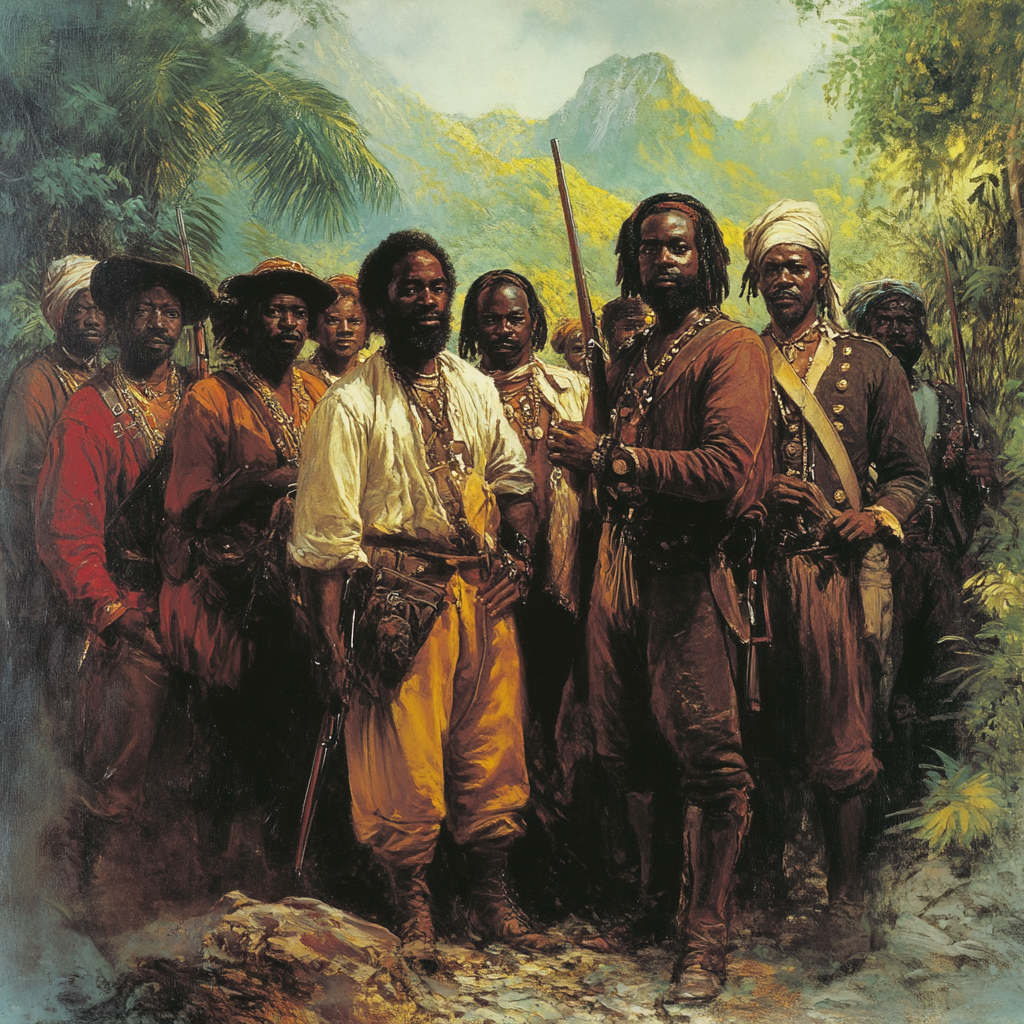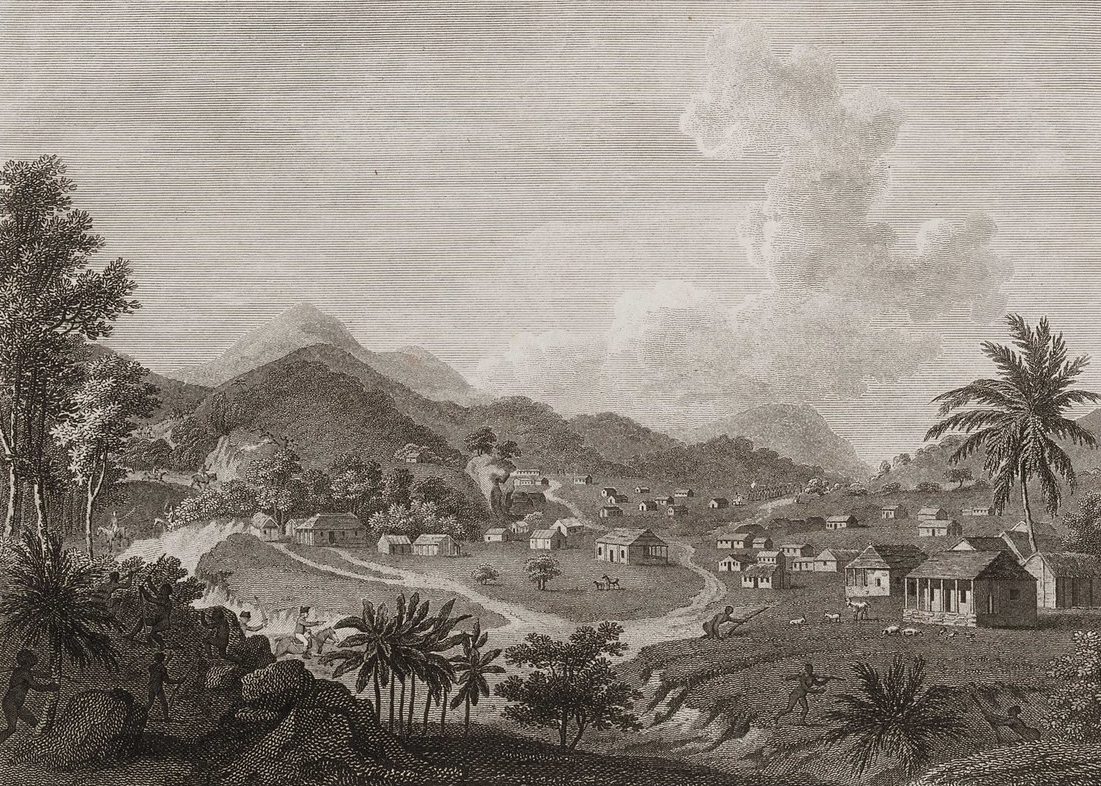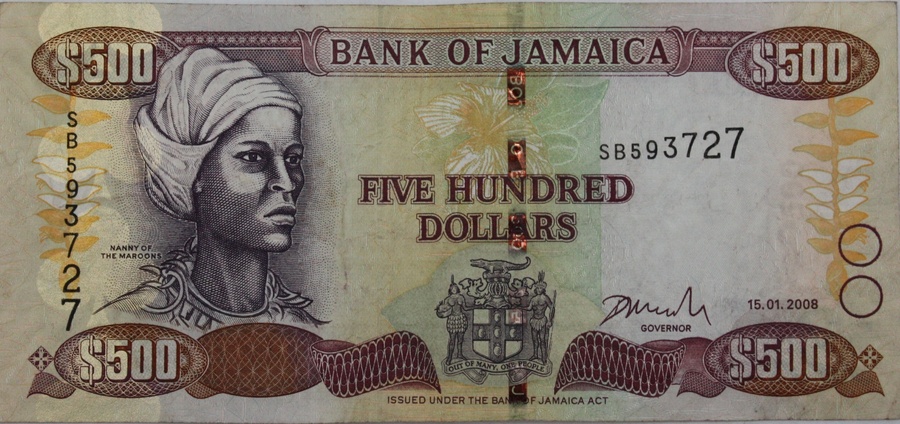Let yourself be inspired by Queen Nanny, the woman who built a fortress of freedom in the heart of the Jamaican mountains.
Introduction
The history of 18th-century Jamaica is marked by the fierce resistance of an iconic figure: Queen Nanny, leader of the Maroons. Alongside Zumbi dos Palmares in Brazil and Toussaint Louverture in Haiti, Nanny symbolizes the fight against colonial oppression and slavery. Deported from West Africa to the Caribbean, this woman, born into the Ashanti tribe in Ghana, became a national heroine in Jamaica, recognized for her decisive role in establishing and defending Maroon communities against the British. Nofi explores the life, strategies, and legacy of Queen Nanny while shedding light on the organization and resistance of the Jamaican Maroons.
I. Origins and context of the Jamaican Maroons

A. The Maroons: Definition and Origins
The term “Maroons” refers to runaway slaves who escaped plantations to form autonomous communities in Jamaica’s inaccessible regions. The history of the Jamaican Maroons begins under Spanish rule around 1650, when the first slaves escaped and sought refuge among the indigenous Arawak communities. These early escapees laid the foundation for what would become, a century later, a resilient and organized Maroon society.
With the arrival of the British in 1655, the resistance intensified. The Maroons, now organized into two main groups—the Windward Maroons, led by Queen Nanny, and the Leeward Maroons, under the leadership of Cudjoe—became a thorn in the side of the colonizers. Their shared origin from the Akan people, particularly the Ashantis of present-day Ghana, strengthened their cohesion. These groups shared a language, culture, and history of resistance, crucial elements that fueled their fight against slavery.
B. The Maroon Society: organization and way of life

The Maroons developed an independent society structured around communal values and agricultural and military practices inherited from their African ancestors. Far from the centers of colonial power, the Maroons created a subsistence economy based on farming, livestock, and hunting. They organized raids on plantations to acquire supplies, weapons, and liberate other slaves, thereby swelling their ranks.
The organization of these communities was highly militarized. The Maroons, accustomed to a life of guerrilla warfare, used their intimate knowledge of the terrain to repel British forces. The mountains, with their rugged landscapes and dense forests, provided a natural refuge that protected them from direct assaults by the colonizers. In this context, Nanny Town, the community founded by Queen Nanny in the Blue Mountains, became a strategic stronghold.
II. Queen Nanny: leader and strategist
A. The Rise of Nanny: from slave to leader

Born around 1686 in the Ashanti tribe, Nanny was captured and deported to Jamaica as a child. Sold to a plantation owner, she was placed in Saint Thomas Parish, a region near Port Royal where working conditions were particularly brutal. Alongside her brothers, Cudjoe, Accompong, Johnny, and Quao, she refused to accept a life of slavery. Together, they escaped and joined the established Maroon communities in the mountains.
Within this Maroon society, Nanny quickly distinguished herself with her charisma, strategic intelligence, and unwavering determination to liberate her peers. As a woman, she defied the conventions of the time by assuming a leadership role. Her reputation grew as she successfully organized the escape of hundreds of slaves and integrated them into a thriving Maroon society.
B. Nanny’s military strategies

Nanny Town, located in the Blue Mountains, became a model of an impregnable fortress. The town was perched on a mountain ridge, making it difficult to access and allowing the Maroons to monitor enemy movements and repel British attacks. The town had only one entry, a narrow path flanked by cliffs, making any invasion attempt extremely perilous for attackers.
Queen Nanny excelled in guerrilla warfare, using military techniques inherited from her Ashanti heritage, such as camouflage and ambushes. The Maroon soldiers, under her command, disguised themselves as trees or bushes, setting traps for the British troops. When the British pursued them into the forest, they often fell into carefully planned ambushes. Although the Maroons were outnumbered, they compensated for this disadvantage with their deep knowledge of the terrain and effective military organization.
The symbol of this resistance was the Abeng, a war horn used by Nanny to communicate with her fighters across the mountains. The sound of the Abeng alerted lookouts of approaching British forces and coordinated defensive maneuvers. This instrument became not only a crucial military tool but also a symbol of the struggle for freedom.
III. Impact and legacy of Queen Nanny’s resistance
A. The consequences of the Maroon Wars

Between 1728 and 1734, the British launched a series of assaults against the Maroon communities, particularly Nanny Town. Despite their numerical and material superiority, the colonial troops failed to capture the town for several years. The resistance led by Queen Nanny severely tested the British forces, which suffered significant losses in men and equipment.
However, in 1733, Nanny Town suffered a significant blow when Nanny was killed by a renegade slave named Captain Sambo, who had joined the British forces. This assassination marked a turning point in the Maroon War. Deprived of its leader, Nanny Town was eventually conquered by the British in 1734. The survivors dispersed, joining other Maroon communities or relocating to less accessible regions.
Nanny’s death did not dampen the Maroons’ spirit of resistance. In 1739, after years of conflict, the British were forced to negotiate peace treaties with the Maroons, effectively recognizing their autonomy. These treaties, though controversial, guaranteed the Maroons land ownership and freedom for those who had escaped slavery. Nanny, though deceased, remained a symbol of this partial victory against slavery.
B. Queen Nanny’s legacy in Jamaican culture

Today, Queen Nanny is revered in Jamaica as one of the country’s seven national heroes. Her legacy is celebrated through various cultural representations, whether on banknotes, in visual arts, or in literature. Nanny embodies the fierce resistance to oppression, and her story is taught as an example of courage and determination in the face of adversity.
The Maroon communities she helped establish, such as Moore Town, still exist today, preserving the cultural traditions and practices inherited from the early Maroons. These communities continue to play a role in maintaining Jamaican identity, reminding us of the importance of the fight for freedom in the country’s history.
Queen Nanny’s impact extends beyond the borders of Jamaica. She is a symbol of the anti-slavery struggle throughout the African diaspora. Her refusal to submit, her military strategy, and her leadership continue to inspire resistance movements and human rights struggles worldwide.
Conclusion
Queen Nanny remains a central figure in Jamaican history, embodying the relentless resistance against slavery and colonization. Her leadership and strategy enabled the Jamaican Maroons to survive against a far superior colonial power. Her legacy endures in Jamaican culture and identity, and she continues to inspire the fight for justice and freedom. Nanny is not just a historical figure but a living symbol of resilience and the ability of oppressed peoples to rise against injustice, an example that still resonates today in the battles for emancipation and human dignity.
